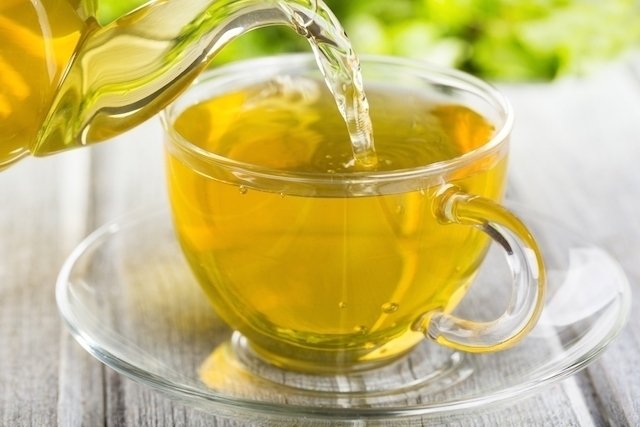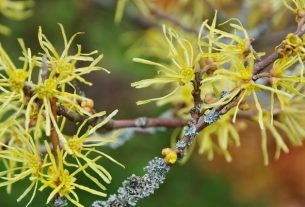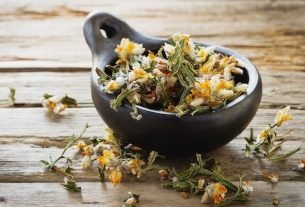Teas to regulate menstruation, such as marjoram tea or St. Kitts herb tea, contain substances that can help balance hormonal levels in women, allowing menstruation to occur at a more regular period, in addition to helping to reduce menstrual flow, when it is very intense, or even to alleviate menstrual cramps.
These teas should not be used in the case of a suspected or confirmed pregnancy, as they also stimulate the contraction of the uterus, increasing the risk of miscarriage or causing serious changes in the baby, compromising its motor and brain development.
Furthermore, it is important to consult a gynecologist when menstruation is irregular, as there may be a problem that needs to be treated, such as polycystic ovary syndrome, for example. Learn more about the main causes of irregular menstruation.

1. Marjoram tea
Marjoram tea, prepared with the medicinal plant Oregano marjoram, can help regulate menstruation, especially in cases of polycystic ovary syndrome, as it can help improve insulin resistance, which is common in polycystic ovaries. See the main causes of polycystic ovary syndrome.
Ingredients:
- 20 g of marjoram leaves;
- 1 liter of water.
Preparation mode:
Bring the water to a boil and when it is boiling, turn off the heat and add the marjoram leaves. Let it rest for about 10 minutes, then strain and drink up to 3 cups a day.
The use of marjoram is not recommended during pregnancy or for girls up to 12 years of age, as this plant can lead to hormonal changes that can influence the baby’s development or the girl’s puberty.
2. Oregano tea
Oregano tea is popularly used to regulate menstruation because it can increase blood circulation and stimulate contraction in the uterus. Learn more about oregano tea.
However, more studies with humans are still needed to confirm the possible benefits of oregano tea on menstruation.
Ingredients:
- 1 tablespoon of oregano;
- 1 cup of boiling water.
Preparation mode:
Pour 1 cup of boiling water over the oregano leaves for 5 minutes. Then, let it cool, strain and drink 2 to 3 times a day.
3. Cinnamon tea
Cinnamon is an excellent home remedy for regulating the menstrual cycle, normalizing late menstruation, when consumed regularly, as it improves blood flow to the uterus and promotes its contraction, favoring menstruation.
Furthermore, this tea can help reduce menstrual flow in women who have very heavy flow and relieve intense menstrual cramps, nausea or vomiting during menstruation. See other teas for menstrual cramps.
Ingredients:
- 1 cinnamon stick;
- 1 cup of water.
Preparation mode:
Place a cinnamon stick in a pan of water and let it boil for about 5 minutes. Then, let it cool, remove the cinnamon and drink immediately.
4. Rue leaf tea
Rue tea has flavonoids with uterus-stimulating properties, and is generally indicated to regulate menstruation, when menstruation is absent, as it can help menstruation come down, or help reduce menstrual flow, when it is very intense.
Ingredients:
- 1 dessert spoon of rue leaves;
- 1 cup (tea) of boiling water.
Preparation mode:
Add the rue leaves to the cup of boiling water, cover and wait for 5 to 10 minutes until the tea is lukewarm. A woman who wants to regulate her menstruation, or restore menstrual flow, should drink 3 cups of this tea daily, two days before her expected period.
This tea is contraindicated in case of pregnancy, suspected pregnancy and lactation. Furthermore, rue tea can also reduce fertility and is not recommended for women who wish to become pregnant. See the complete list of teas contraindicated during pregnancy.
5. St. Kitts herb tea
St. Christopher’s herb tea, made with the plant of the species Cimicifuga racemosaalso known as black cohosh, has isoflavone and caffeic acids, which can help reestablish a regular menstrual cycle, promoting menstruation and relaxing the uterus.
Ingredients:
- 1 teaspoon of dry herb;
- 1 cup of boiling water.
Preparation mode:
Place the dry herb in a cup of boiling water and let it rest for 10 minutes. Then strain, let it cool and drink 2 to 3 times a day. This tea can be used for 2 to 3 months, until the cycle becomes more regular. However, it should not be used by pregnant women or women with a history of breast cancer.
Another way to use St. Christopher’s wort is in the form of tablets, which can be purchased at pharmacies or drugstores. Find out how to use St. John’s wort tablets.
6. Agnocasto tea
Agnocasto tea, prepared with the medicinal plant The chaste lamb’s vineis rich in flavonoids, essential oils, iridoids and glycosides, which help balance female hormones, which can help regulate the menstrual cycle, in cases of very long or very short intervals between periods, absence of menstruation or syndrome of polycystic ovaries, for example.
Ingredients:
- 1 teaspoon of agnocasto fruits;
- 300 mL of water.
Preparation mode:
Add the ingredients to a container and bring to a boil, letting it boil for about 3 to 4 minutes. Cover and let rest for 10 minutes. Strain and drink up to 2 cups per day, for a maximum period of 3 months. See other ways to use agnocasto.
Agnocasto tea should not be used by anyone under 18 years of age, or in cases of suspected or confirmed pregnancy, breastfeeding, by women undergoing hormone replacement treatment or taking oral contraceptives or sex hormones.
Care must be taken when administering tea doses, as high dosages can cause intestinal problems.
7. Angelica tea
Angelica tea, prepared with the medicinal plant Angelica sinensis (Dong quai), is a good home remedy option to regulate menstruation as it helps improve blood flow to the reproductive organs, stimulate the uterine muscles, improve ovarian function and even fertility.
Ingredients:
- 20 g of angelica root;
- 800 mL of boiling water.
Preparation mode:
Add the angelica root to the boiling water and let it rest for 10 minutes. Then strain and drink 1 cup about 3 times a day.
8. Wild yam tea
The wild yam, also known as wild yam, is a medicinal plant traditionally used to alleviate the symptoms of menopause. However, as it contains a substance that has an effect similar to estrogen, it can help regulate the menstrual cycle, especially when the cycle is irregular due to an imbalance in the levels of this hormone in the body.
Ingredients:
- 1 teaspoon of wild yam rhizomes
- 2 cups of water
Preparation mode:
Boil the roots together with water in a pan for about 20 minutes, then filter the tea and drink 2 to 3 cups a day. This tea should not be ingested during pregnancy, as it stimulates uterine contraction.
9. Parsley Infusion
Parsley, in addition to its use in cooking, can also be used as a home remedy due to its properties, and can be used to regulate the menstrual cycle, as it is capable of stimulating menstruation.
Ingredients:
- 10 grams of parsley leaves;
- 1 liter of boiling water.
Preparation mode:
Place the parsley leaves in the boiling water and let it rest for about 10 minutes. Then, it should be strained and drunk 3 cups a day, preferably before meals.
10. Calendula tea
Calendula tea with fennel and nutmeg, due to its antispasmodic, analgesic, anti-inflammatory and calming properties, can also help regulate the menstrual cycle and reduce the pain of colic that can occur during this period.
Ingredients:
- 1 handful of marigold flowers;
- 1 teaspoon of nutmeg;
- 1 teaspoon of fennel;
- 1 glass of water.
Preparation mode:
Place the ingredients in a pan and let it boil for 10 minutes. Then turn off the heat, cover the pan and let it cool. Then, sweeten to taste, strain and drink twice a day.
11. Saw palmetto tea
Saw palmetto tea contains fatty acids and phytoestrogens that can help promote proper ovarian function, especially in women with polycystic ovary syndrome, which can help regulate the menstrual cycle.
Ingredients:
- 1 tablespoon of saw palmetto powder;
- 1 glass of water.
Preparation mode:
Add the saw palmetto powder to the glass of water and mix until the powder is completely dissolved. Drink 2 times a day.
Saw palmetto tea should not be used by pregnant or breastfeeding women, or by women with blood clotting problems such as hemophilia, liver diseases such as liver failure or pancreas problems such as pancreatitis, for example.

Sign up for our newsletter and stay up to date with exclusive news
that can transform your routine!
Warning: Undefined array key "title" in /home/storelat/public_html/wp-content/plugins/link-whisper-premium/templates/frontend/related-posts.php on line 12
Warning: Undefined array key "title_tag" in /home/storelat/public_html/wp-content/plugins/link-whisper-premium/templates/frontend/related-posts.php on line 13



